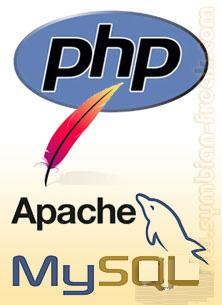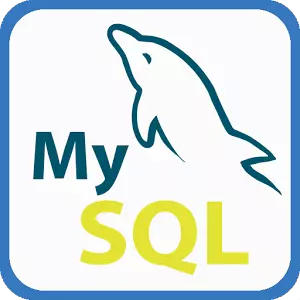10 recommended articles about the mysql_query() function
When using PHP to obtain the table field name, it is implemented through the mysql_field_name() function. The syntax format of this function is as follows: string mysql_field_name (resource $result, int $field_offset) The mysql_field_name() function will return the name of the field of the specified index. It The parameters are described below. l result: the result set returned after the mysql_query() function is executed. l field_offset: The offset of the field, the starting value is zero. The sample code for PHP to obtain table field names using the mysql_field_name() function is as follows: In the above PHP code for obtaining table field names, the first field name and the second field name can be output. http://www.bkjia.com/PHPjc/445930.htmlwww.bkjia.comtruehttp://www.bkjia.com/PHPjc/445

Introduction: Use PHP to obtain table field names through the mysql_field_name() function Implementation, the syntax format of this function is as follows: string mysql_field_name (resource $result, int $field_offset) mysql_field_name() function will return the name of the field of the specified index, and its parameters are described as follows. l result: the result set returned after the mysql_query() function is executed. l field_of...
2. mysql_field_type() function content recommendation

Introduction: Definition and usage mysql tutorial_field_type() function returns the type of the specified field in the result set. Returns the type of the specified field if successful, or false if failed. Syntax mysql_field_type(data,field_offset) Parameter Description data Required. The data pointer to use. The data pointer is the result returned from mysql_query(). field_offset required. Indicates which field to start returning from...
3. Recommended articles about mysql_field_flags

Introduction: Definition and Usage The mysql_field_flags() function returns the flags of the field records. This function gets the field data from the mysql_query() function and returns a string on success, or FALSE, or on failure when there are no more rows. Possible return values: auto_intcrement -1 if a UTO_INCREMENT binary is set -1 if the field has a binary attribute set blob -1 if the field is a B LOB enumeration -...
4. Recommended articles about mysql_field_seek

##Introduction: The role of mysql_field_seek is in mysql_query In the returned record set, adjust it to the record we specified. If there is, the current record will be returned. If not, it will be false; mysql_field_seek syntax: mysql_field_seek (data, field_offset) Parameters: data: must refer to the data set returned correctly by mysql_query.field_offset: Specify the location. Start looking at mysq from 0 without writing code...
5. Recommendations on the usage of the mysql_field_name() function

Introduction: Using PHP to obtain the table field name is implemented through the mysql_field_name() function. The syntax format of this function is as follows: string mysql_field_name ( resource $ result, int $field_offset) The mysql_field_name() function will return the name of the field of the specified index. Its parameters are described as follows. l result: the result set returned after the mysql_query() function is executed. l field_of...
6. 10 recommended articles about the mysql_field_flags() function

Introduction: Definition and Usage The mysql_field_flags() function returns the flags of the field records. This function gets the field data from the mysql_query() function and returns a string on success, or FALSE, or on failure when there are no more rows. Possible return values: auto_intcrement -1 if a UTO_INCREMENT binary is set -1 if the field has a binary attribute set blob -1 if the field is a B LOB enumeration -1 if the field...
7. Mysql_fetch_field function instance usage summary

##Introduction: mysql_init initialization Database link – get a link mysql_real_connect connects to the database server and executes mysql_query query – the query statement is a string to retrieve each row separately mysql_store_result – the result is stored in the link and is a one-time query. From the result set, get the header information – mysql_fetch_fields – table The header information is stored in the memory space pointed to by the MYSQL_FIELD type pointer to parse the table header –mysql_...
8. Summary of usage of the mysql_fetch_field() function

Introduction: mysql_init initializes the database link – gets a link mysql_real_connect connects to the database server and executes the mysql_query query – the query statement is a string for each Retrieve each row separately mysql_store_result – the results are stored in the link, which is a one-time query. Obtain the header information from the result set – mysql_fetch_fields – the header information is stored in the memory space pointed to by the MYSQL_FIELD type pointer. Parse the header – mysql_...
9. 10 recommended articles about mysql_fetch_assoc()

10.
About mysql_fetch_array() Recommended 10 articles on functions
 ##Introduction: How to operate MySQL database with PHP - using the mysql_fetch_array() function Get information from an array result set The mysql_fetch_array() function fetches a row from the result set as an associative array, a numeric array, or both. Returns an array based on the rows fetched from the result set, or false if there are no more rows. In the previous article "Using the mysql_query() function to execute SQL statements (Method 3 of PHP operating MySQL database)", mysql_que was introduced...
##Introduction: How to operate MySQL database with PHP - using the mysql_fetch_array() function Get information from an array result set The mysql_fetch_array() function fetches a row from the result set as an associative array, a numeric array, or both. Returns an array based on the rows fetched from the result set, or false if there are no more rows. In the previous article "Using the mysql_query() function to execute SQL statements (Method 3 of PHP operating MySQL database)", mysql_que was introduced...
[Related Q&A recommendations]:
node.js - Asynchronous problem of MYSQL in node
mysql - php operates on the database, using both procedural and objectified words. Same code?
#node.js - The execution order of nodejs query database is not right. . How to query
#php synchronously with the same value arranged together?
javascript - Why can't the IF statement be used to directly determine the return value of the mysql_query function?
The above is the detailed content of 10 recommended articles about the mysql_query() function. For more information, please follow other related articles on the PHP Chinese website!

Hot AI Tools

Undresser.AI Undress
AI-powered app for creating realistic nude photos

AI Clothes Remover
Online AI tool for removing clothes from photos.

Undress AI Tool
Undress images for free

Clothoff.io
AI clothes remover

Video Face Swap
Swap faces in any video effortlessly with our completely free AI face swap tool!

Hot Article

Hot Tools

Notepad++7.3.1
Easy-to-use and free code editor

SublimeText3 Chinese version
Chinese version, very easy to use

Zend Studio 13.0.1
Powerful PHP integrated development environment

Dreamweaver CS6
Visual web development tools

SublimeText3 Mac version
God-level code editing software (SublimeText3)

Hot Topics
 MySQL's Role: Databases in Web Applications
Apr 17, 2025 am 12:23 AM
MySQL's Role: Databases in Web Applications
Apr 17, 2025 am 12:23 AM
The main role of MySQL in web applications is to store and manage data. 1.MySQL efficiently processes user information, product catalogs, transaction records and other data. 2. Through SQL query, developers can extract information from the database to generate dynamic content. 3.MySQL works based on the client-server model to ensure acceptable query speed.
 How to start mysql by docker
Apr 15, 2025 pm 12:09 PM
How to start mysql by docker
Apr 15, 2025 pm 12:09 PM
The process of starting MySQL in Docker consists of the following steps: Pull the MySQL image to create and start the container, set the root user password, and map the port verification connection Create the database and the user grants all permissions to the database
 Laravel Introduction Example
Apr 18, 2025 pm 12:45 PM
Laravel Introduction Example
Apr 18, 2025 pm 12:45 PM
Laravel is a PHP framework for easy building of web applications. It provides a range of powerful features including: Installation: Install the Laravel CLI globally with Composer and create applications in the project directory. Routing: Define the relationship between the URL and the handler in routes/web.php. View: Create a view in resources/views to render the application's interface. Database Integration: Provides out-of-the-box integration with databases such as MySQL and uses migration to create and modify tables. Model and Controller: The model represents the database entity and the controller processes HTTP requests.
 Solve database connection problem: a practical case of using minii/db library
Apr 18, 2025 am 07:09 AM
Solve database connection problem: a practical case of using minii/db library
Apr 18, 2025 am 07:09 AM
I encountered a tricky problem when developing a small application: the need to quickly integrate a lightweight database operation library. After trying multiple libraries, I found that they either have too much functionality or are not very compatible. Eventually, I found minii/db, a simplified version based on Yii2 that solved my problem perfectly.
 How to install mysql in centos7
Apr 14, 2025 pm 08:30 PM
How to install mysql in centos7
Apr 14, 2025 pm 08:30 PM
The key to installing MySQL elegantly is to add the official MySQL repository. The specific steps are as follows: Download the MySQL official GPG key to prevent phishing attacks. Add MySQL repository file: rpm -Uvh https://dev.mysql.com/get/mysql80-community-release-el7-3.noarch.rpm Update yum repository cache: yum update installation MySQL: yum install mysql-server startup MySQL service: systemctl start mysqld set up booting
 Laravel framework installation method
Apr 18, 2025 pm 12:54 PM
Laravel framework installation method
Apr 18, 2025 pm 12:54 PM
Article summary: This article provides detailed step-by-step instructions to guide readers on how to easily install the Laravel framework. Laravel is a powerful PHP framework that speeds up the development process of web applications. This tutorial covers the installation process from system requirements to configuring databases and setting up routing. By following these steps, readers can quickly and efficiently lay a solid foundation for their Laravel project.
 MySQL and phpMyAdmin: Core Features and Functions
Apr 22, 2025 am 12:12 AM
MySQL and phpMyAdmin: Core Features and Functions
Apr 22, 2025 am 12:12 AM
MySQL and phpMyAdmin are powerful database management tools. 1) MySQL is used to create databases and tables, and to execute DML and SQL queries. 2) phpMyAdmin provides an intuitive interface for database management, table structure management, data operations and user permission management.
 Centos install mysql
Apr 14, 2025 pm 08:09 PM
Centos install mysql
Apr 14, 2025 pm 08:09 PM
Installing MySQL on CentOS involves the following steps: Adding the appropriate MySQL yum source. Execute the yum install mysql-server command to install the MySQL server. Use the mysql_secure_installation command to make security settings, such as setting the root user password. Customize the MySQL configuration file as needed. Tune MySQL parameters and optimize databases for performance.






